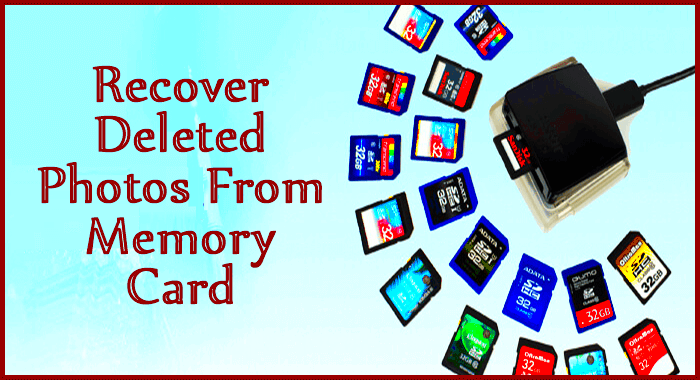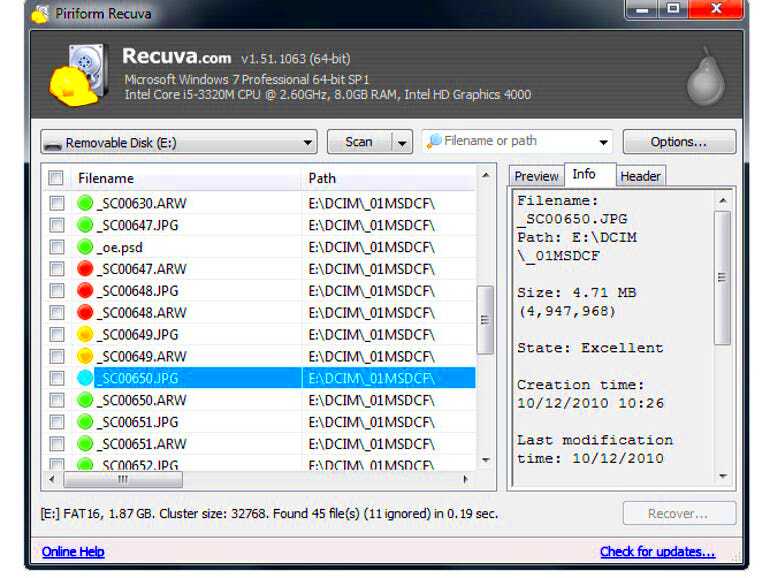Memory Cards: Small Yet Mighty Devices Memory cards are tiny things we carry with ourselves wherever we go. They primarily see action inside cameras, cell phones or tablets. In other words, these cards exist in many forms such as SD cards, microSD cards and CompactFlash cards among others. Each of these types has its unique storage size (capacity), transfer speed as well as its ability to be used with different devices. A good understanding of how these memory cards operate can help one in file management.
You study data till the end of October 2023.Flash memory is used for data storage in memory cards, which is why they are able to retain information even when power-off. They are favored because they provide an easy means for transferring images and videos from one apparatus to another. But memory cards can also fail or become corrupted. Data loss may occur due to factors such as incorrect removal, physical harm or formatting mistakes.
To utilize your memory card to its fullest potential:
- Regularly back up your data to avoid loss.
- Keep your memory card in a safe and dry place.
- Use your card properly to avoid corruption.
Reasons for Image Deletion

The images can be removed from memory cards due to many reasons. Following are some of those generally accepted scenarios:
- Accidental Deletion: This is the most common cause. You might delete photos while trying to free up space.
- Formatting the Card: When you format a memory card, all files are erased, which can be a mistake if not done carefully.
- Corruption or Damage: Physical damage or a corrupted card can lead to lost images.
- Virus Infection: Malware can corrupt files and make them inaccessible.
By being mindful of these factors, you won’t have to worry about your pictures being lost unintentionally again.
How Deleted Images Can Be Recovered

Recovering erased images is doable, therefore it can be comforting to comprehend how it operates. As soon as you delete a file, it does not vanish right away. Rather, the area where it was stored is labeled ready for new information. It is frequently plausible to restore your house until that area is replaced.
There are various techniques for retrieving erased pictures:
- Recovery Software: There are many software options available that can scan your memory card for recoverable files.
- Professional Data Recovery Services: If the images are critical, consider hiring a professional. They have specialized tools and expertise.
- Check Your Device: Sometimes images are not deleted but simply hidden. Check your device's settings.
But hey, it’s never too late until it’s too late! The sooner you try to recover files deleted from your computer the higher the probability of success. You may just be surprised at how much faster everything goes if only you act quickly enough.
Using Recovery Software for Retrieval

Your knowledge base only goes up to October 2023. Recovering applications may be the answer when you mess up by accidentally deleting photos from your memory card. The programs specifically designed for these recoveries scan your card and identify lost files hence making the recovery process easier. Most of these recovery tools can be user-friendly meaning that you need not to be a technology genius to use them.
These are some of the commonly used restorative applications:
- Recuva: This free software is easy to use and effective for recovering deleted files from various storage devices.
- Disk Drill: Available for both Windows and Mac, Disk Drill offers a simple interface and powerful recovery features.
- PhotoRec: A free, open-source tool that works with many file formats and can recover images from damaged media.
To employ recovery software, adhere to these instructions:
- Download and install the recovery software on your computer.
- Connect your memory card to the computer.
- Open the software and select your memory card from the list of devices.
- Run the scan to locate deleted files.
- Review the recoverable files and select the images you want to restore.
- Choose a safe location on your computer to save the recovered files.
It’s a piece of cake to retrieve erased photos when you have the appropriate program, and this saves your mind from any worry.
Step by Step Guide to Recover Deleted Images
The process of recovering deleted pictures might seem like a huge task, but by using a step-by-step approach it can become much easier. So, let us see how to go about it:
- Stop Using the Memory Card: As soon as you realize images are deleted, stop using the card. This prevents new data from overwriting lost files.
- Choose Recovery Software: Select a reliable recovery software that suits your needs, such as Recuva or Disk Drill.
- Install the Software: Download and install the software on your computer, making sure not to install it on the memory card itself.
- Connect the Memory Card: Use a card reader to connect your memory card to the computer.
- Run a Scan: Open the recovery software and select your memory card. Initiate a deep scan to find lost images.
- Review Found Files: Once the scan is complete, browse through the recoverable files. You might find your lost images here.
- Recover Selected Images: Select the images you wish to recover and follow the prompts to save them to your computer.
Adhering to the mentioned techniques may enhance your probability of retrieving those valued representations.
Tips to Prevent Future Image Loss
Although it is possible to retrieve erased photos, taking precautionary measures is the best. These are some suggestions to help you prevent losing your data again:
- Regular Backups: Make it a habit to back up your images regularly to an external hard drive or cloud storage.
- Use Safe Eject Procedures: Always use the proper eject option when removing your memory card to avoid corruption.
- Avoid Overfilling: Keep your memory card at least 20% empty to minimize the risk of errors.
- Handle with Care: Protect your memory card from physical damage by storing it in a safe place.
- Update Your Software: Keep your recovery software updated to ensure it has the latest features for file recovery.
With the use of these pointers, one can adeptly minimize the likelihood of misplacing significant photographs and maintain the safety of their recollections.
Alternative Methods for Image Recovery
In deleted image retrieval, recovery software is usually the initial option that people go for; however, there are other options worth considering. If for instance, the software fails to work or you are looking for other alternatives, these methods might be useful. Below are some of such alternatives.
These are some possible approaches that you may want to think about:
- Check Backup Services: Many devices automatically back up photos to cloud services. Check platforms like Google Photos, iCloud, or Dropbox to see if your images are stored there.
- Use Previous Versions: If you're using a computer, some operating systems allow you to restore previous versions of folders, which might contain your deleted files.
- Memory Card Reader: If you suspect that the card itself is damaged, using a dedicated memory card reader instead of a camera might help retrieve the files more reliably.
- Seek Professional Help: If the images are critical and you cannot recover them yourself, consider hiring a professional data recovery service. They have advanced tools and expertise that can often recover files others cannot.
This way you can be sure to reconcile their benefits and drawbacks, but it is good practice to experiment with various techniques since these will ensure the highest probability of success when it comes to restoring lost pictures. It is important to note that speed is essential for photo restoration.
FAQs About Recovering Deleted Images
You’re not the only one with questions regarding the recovery of deleted images. Below are some common questions people ask, along with answers that may be helpful.
- Can deleted images be recovered from a formatted memory card?
Yes, as long as the data has not been overwritten, recovery software can often retrieve images from a formatted card. - How long do I have to recover deleted images?
The sooner you attempt recovery after deletion, the better your chances. The ideal time is immediately after you notice the loss. - Is recovery software safe to use?
Most reputable recovery software is safe, but it’s essential to download from trustworthy sources to avoid malware. - Will recovery affect my memory card?
Recovery attempts generally do not damage your memory card. However, always stop using the card after deletion to prevent data overwriting. - What should I do if recovery fails?
If software recovery doesn't work, consider professional data recovery services as they may have tools to recover files that software cannot.
Any apprehension you might be having about the restorative procedure can get alleviated by these common question and answers.
Conclusion on Image Recovery Techniques
In closing, retrieving erased pictures is doable on learning card through several ways. Different methods of recovering lost photos include means as recovery software and other kinds. Knowing what choices are available helps in protecting cherished recollections. The most important thing is to respond immediately and employ the appropriate instruments.
Make sure to do regular backups of your photos and handle your memory cards safely in order not to lose images in future. Keep in mind that image recovery is possible even if you have lost them. It is only with knowledge and readiness that you will be able to secure your memories for many years.

 admin
admin








